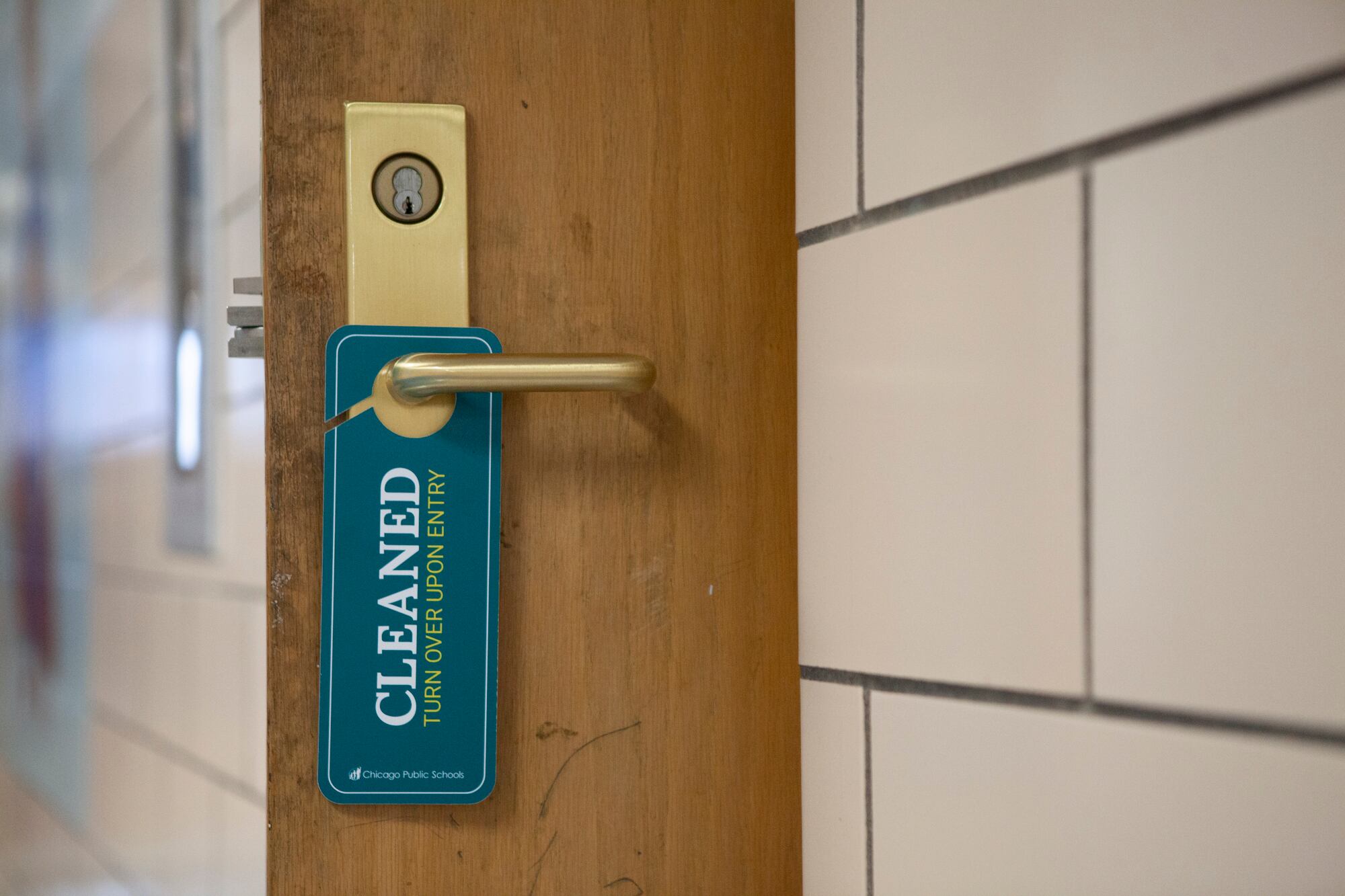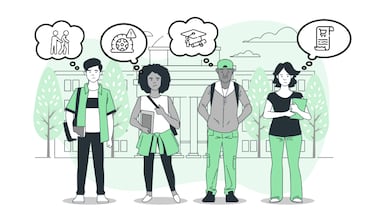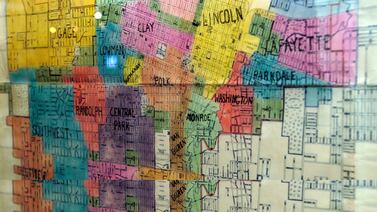Chicago Public Schools said that 49,000 students failed to log into classrooms on the first day of remote learning, a figure it has now winnowed down to fewer than 6,900 after expanded outreach efforts.
The figures released at Wednesday’s Board of Education meeting offer the first look at how many of Chicago’s 300,000 students the school district is still trying to contact. They are a stark reminder of the ongoing challenges that Chicago faces in connecting with students remotely.
After school buildings closed in the spring, the district also reported thousands of missing students. Now, with a fresh start to the school year, officials detailed new protocols to find them, including tens of thousands of phone calls to vulnerable students, a mass flyering campaign led by Safe Passage workers, and security guards trained for home visits.
District leaders said they have continued to get in touch with new students this week, the third since school started, in large part due to their broad outreach efforts. As of last Friday, the number of students marked “did not arrive” was 2,680.
“We did have a smooth opening to the school year,” LaTanya McDade, chief education officer, said. “We extended the time to allow phone calls and outreach, and saw results with kids engaging with school.”
Those outreach efforts have expanded significantly this school year compared to last spring, when the responsibility for tracking down the thousands of students who fell out of touch in the first weeks of remote learning fell primarily on individual schools. (A revised figure released by the district at the end of the year counted 559 students as off-the-grid for most of the spring.)
Since August, central office staff, bus aides, and Safe Passage workers have been making daily phone calls to students who are homeless, attending Chicago schools for the first time or in key transitions such as ninth grade. The staff members let them know school was starting, and checked to see if students had internet and device access.
As of Tuesday, nearly 35,000 families had received those calls, according to the district. Safe Passage workers, who are usually employed to stand on street corners before and after school to look out for students as they commute, handed out nearly 60,000 flyers around the city.
This school year the district will also take a more centralized approach to home visits. The district trained 1,317 security officers to visit students that schools couldn’t reach by other means, with a focus on the 100 schools with lowest attendance.
It has also spent $50 million to get low-income students internet access, with an ambitious goal of signing up 100,000 students. So far, about a quarter of that number have signed up.
Still, board members expressed concern Wednesday about efforts to contact students. Not only have some Chicago communities been deeply affected by COVID-19 deaths and financial uncertainty, enrollment also affects district finances.
“Chief McDade, how are we going to contact the 6,900 students?” board president Miguel Del Valle asked Wednesday.
In response, McDade said outreach efforts would continue. “All of the efforts I described have not stopped,” she said. “In the coming weeks, we will be able to give a more accurate picture.”
District officials also said the number of students who registered but didn’t come to class was not a function of remote learning, and that there was often a gap between students who registered and the district’s final 20th day enrollment calculation.
Last spring, a Chalkbeat analysis showed that the schools that struggled most to contact all of their students were in Black and Latino communities hit disproportionately hard by the pandemic; they also were more likely to have a higher percentage of Black students and students who receive subsidized lunch.
At the start of each school year, some students who register for Chicago schools never show up, either because they moved out of the district or choose to send their children to charter or private schools. The district marks those students as “did not arrive” after the first day of school.
This year, rather than removing students from the class rolls, schools were instructed to continue marking all registered students as absent, while the district, and individual schools, continued outreach efforts.
Attendance data from the first day of school showed 84% of students attended on the first day, down 10 percentage points from the 94% rate the district met the last several years. Those numbers varied widely at the campus level, with some schools reaching attendance rates upwards of 95%, while others reported closer to 60% of students participating on the first day. Schools that had trouble reaching students in the spring tended to have lower attendance rates.
Even as they have received district support, individual schools have still worked to create parent engagement systems and help families adjust to remote learning.
At Brunson Math & Science Specialty School in Austin, one of the neighborhoods hardest hit by COVID-19, only 52% of students logged on the first day, far below the district average of 84%.
Principal Carol Diane Wilson said that wasn’t for lack of trying. Over the summer her staff updated the contact information of more than 300 parents, planned outreach meetings, and asked students to reach out to their friends, all in an effort to secure engagement at the school, where 84% of students are low income. Over the first few days of school, the number of students logging in climbed to 83% as parents overcame internet issues and difficulties logging in.
Still Wilson said she expected a drop in enrollment, largely driven by the COVID-19 crisis. “COVID has run rampant in this area. We have a lot of parents coming in to get food distribution, we have a lot of families that are doubling up,” said Wilson. “I do foresee a drop in enrollment and I’m just hoping that once this pandemic is done, enrollment will increase.”
Suder Montessori Magnet School, in the wealthier West Loop neighborhood and with only 45% of students living below the poverty line, started the first day with a 98% attendance rate. The principal, Bosede Bada, said the spring was a disaster.
In an effort to better prepare for fall, her staff conducted a digital needs survey over the summer. Then, for the first week of school, Bada and her staff cleared their schedules to address technology issues. Many students logged on, but some did not. “The children that need the most support are the children that we often have a very hard time getting in contact with,” Bada said.
Now, she hopes to continue to build relationships in her school so students stay engaged. “When you have a strong connection with a child or a family, you have to leverage that connection to get the students engaged.”
Still, even as students log on, schools must turn their attention to keeping them engaged. The district has returned to pre-pandemic attendance taking.
Foreman College and Career Academy had the highest percentage of students in the district who didn’t log into remote learning in the spring, with 26%. On the first day of school this year, Foreman had 71% attendance.
Jessica Cipicchio, a special education teacher at Foreman, said that most of her students eventually came to class, but they still struggled to regularly engage while juggling school, work and family responsibilities, all made more urgent by the pandemic. “This online learning is hard,” Cipicchio said. “We are seeing a lot of things we saw in the spring.”








